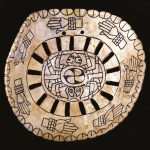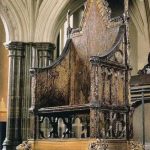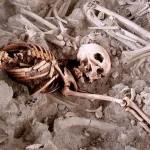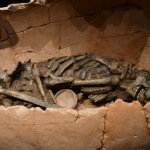CURRENT NEWS:A Seven Hundred Year Old Murder Mystery: Who and Why Bludgeoned the Bocksten Man to Death?
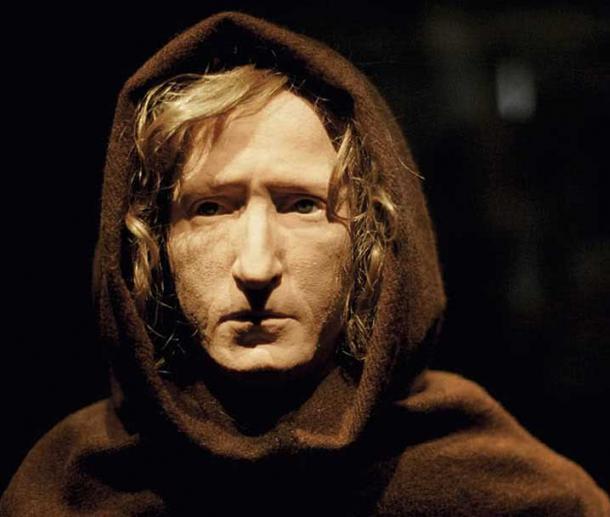
Around 700 years ago, a young man, who has come to be known as ‘Bocksten Man’, was struck three times on the head, then tossed into a peat bog and impaled with three wooden poles to prevent his body rising to the surface. What is the story behind the grisly ending to this young man’s life, and why were his killers so determined to keep his body from ever surfacing?
The body of Bocksten Man was discovered in a peat bog in Bocksten in Sweden during the first half of the 20th century. Based on his attire, which was relatively well-preserved due to the waterlogged condition of the bog, it was concluded that Bocksten Man lived in the 14th century. In addition, Bocksten Man’s clothing also suggests that he was a person of high social standing.
The Discovery of Bocksten Man
Bocksten Man was discovered in 1936. When the bog body was found, it was in a prostrate position, and impaled in the chest by roofing material. The local police were contacted, and it was found that the body in the bog was not from a recent date. Therefore, it was taken to the Varberg Museum, where it could be studied. Studies conducted on Bocksten Man over the decades have revealed some interesting information about this young man.
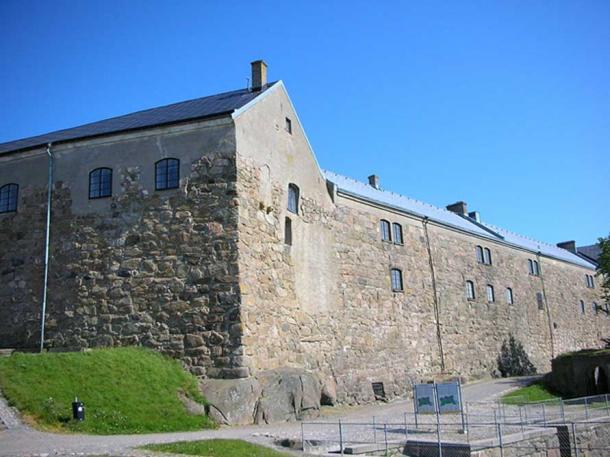
Halland Museum of Cultural History is situated in this building in the Varberg Fortress. (Public Domain)
Bocksten Man’s Attire
For a start, Bocksten Man’s clothing have been considered to be one of the best preserved of its kind from the Medieval period in Europe. Bocksten Man’s clothing consisted of a tunic / cote, a mantle / cloak, a hood, woolen hose, and leather shoes. In addition, he also had two leather belts and two knives on him. When Bocksten Man was discovered, reconstructions of his clothing were made. These, however, were found to have not been entirely accurate. Therefore, between 1979 and 1981, following a re-examination of the garments, some changes were made to the reconstructions. Bocksten Man’s clothing also indicated that he had belonged to the upper classes of Medieval society, and allowed researchers to speculate on the possible reasons for his murder.
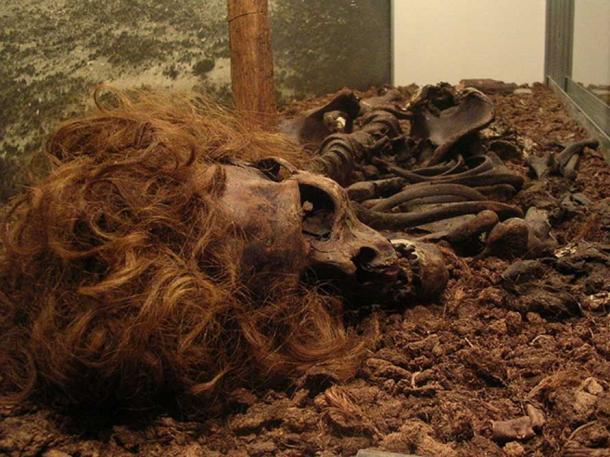
The Bocksten Bog Man (CC BY 2.0)
His Final Moments
By studying Bocksten Man’s body, it was revealed that he had been between 30 to 35 years old at the time of his death. His long hair, which was preserved by the conditions of the bog, provides additional support to the claim that he was a high-ranking individual in his society. Furthermore, it was found that there his skull had been damaged by three blows from a blunt weapon, perhaps a pole or a hammer. One of these is located on the body’s lower, another near the right ear, and the last further back on the head. It has been suggested that these injuries, especially the last, had caused Bocksten Man’s death. Alternatively, it has been speculated that Bocksten Man had died a natural death, and that the injuries to his head were received over the centuries following his death.
If Bocksten Man was indeed a victim of murder, two main hypotheses have been presented regarding the reason for his murder. The first is that Bocksten Man had been recruiting soldiers, and was killed for that. Another suggestion is that he had been a tax collector, which caused him to be murdered. It may be pointed out that Bocksten Man had a branch from a straw roof stuck into his chest, and it has been proposed that this was done, perhaps by the perpetrators of the crime, to make sure that their victim could not seek revenge from beyond the grave.

Bocksten Man’s facial reconstruction (historum)
Facial Reconstruction
Using modern technology, the face of Bocksten Man was reconstructed about a decade ago. A replica of Bocksten Man’s skull was first made, and then, a model was made using computer tomography. The injured parts of the skull were reconstructed, and the face was widened slightly, as the original skull is believed to have been compressed as a result of being in the bog for centuries. The model of Bocksten Man is now displayed in the Halland Museum of Cultural History (which used to be known as the Varberg County Museum).




